15 Beautiful Wall-Growing Plants for Your Home
Adding plants to your walls can be a wonderful way to create a unique, green space. Wall gardening helps you make the most of limited areas while adding beauty to your surroundings. Climbing plants are perfect for vertical spaces, offering a lush, natural display. Not only do they bring charm, but they can also provide privacy and shade. Here are some great plant choices to consider for your wall garden.
This post may contain affiliate links, which helps keep this content free. Please read our disclosure for more info.
Creeping Fig (Ficus pumila)
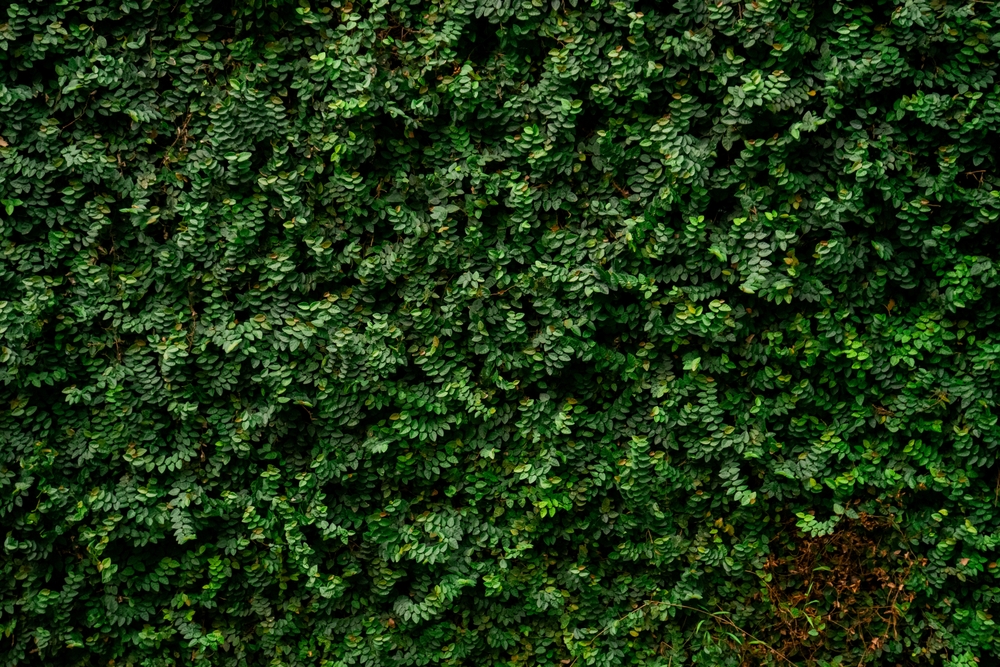
Creeping fig is a versatile and hardy plant that thrives when planted along walls. It produces small, heart-shaped leaves that create a dense, lush coverage. It is perfect for covering surfaces quickly, especially in shady or partially sunny areas. This plant is well-known for its ability to cling to walls, making it a low-maintenance option for vertical gardening.
It is also resistant to various weather conditions, including frost, and is a great choice for outdoor spaces. Creeping fig requires only occasional pruning to keep it from becoming too overwhelming. This plant can be easily propagated by cutting and planting small sections of the vine. It grows best in moist, well-drained soil, ensuring it stays healthy and vibrant.
English Ivy (Hedera helix)
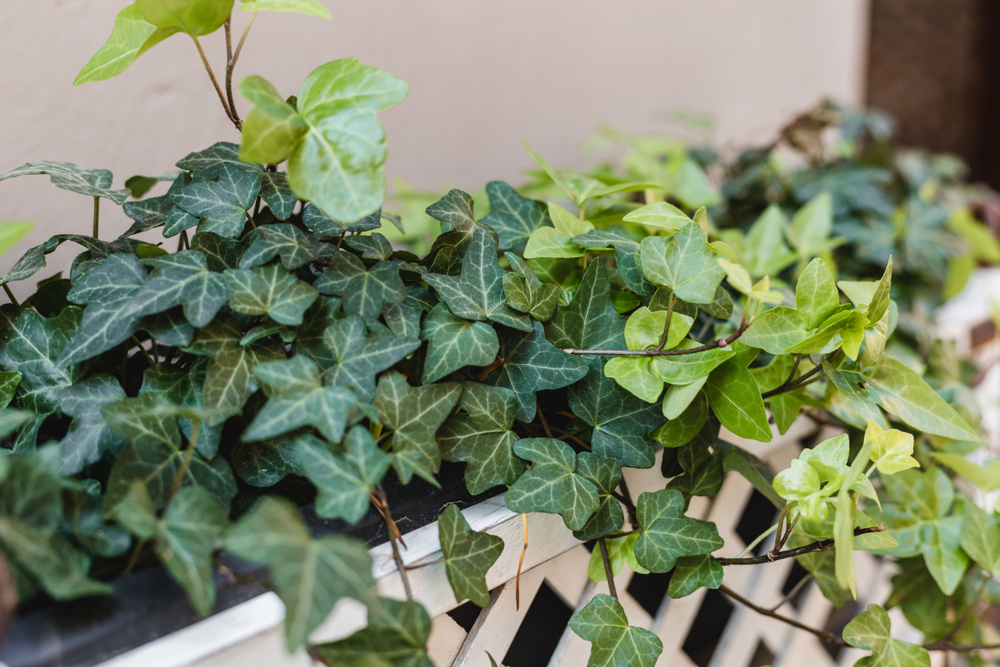
English ivy is a classic climbing plant often used to cover walls and fences. Its dense, evergreen foliage provides year-round interest, making it an excellent choice for adding greenery to your space. The plant grows well in a variety of conditions, including shade, and can quickly cover vertical surfaces. It is also tolerant of various soil types, making it an easy choice for gardeners.
Though low-maintenance, English ivy does require some regular care to ensure it does not overrun your space. Occasional trimming helps manage its growth and prevent it from spreading too aggressively. This plant can also be trained to grow along trellises or other support structures. Keep it well-watered to maintain its vibrant, lush appearance throughout the year.
Boston Fern (Nephrolepis exaltata)
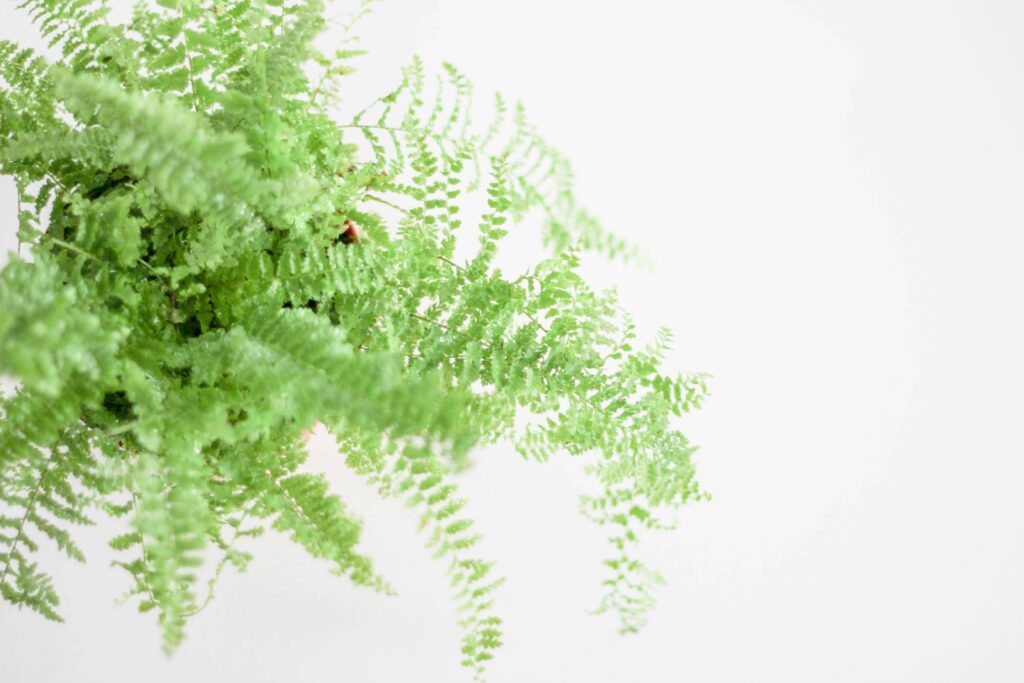
The Boston fern is a popular choice for adding a soft, feathery touch to a wall garden. Its delicate, arching fronds offer a graceful, flowing look that contrasts beautifully with other plants. This fern thrives in humid environments and does well in partial to full shade, making it perfect for shaded wall spaces. Its compact size and cascading nature make it ideal for growing on a wall.
Boston ferns are relatively low-maintenance, but they do need consistent moisture to thrive. The plant enjoys humidity, so it may need extra water during dry periods. It is best to place it in an area with good air circulation to prevent mold or mildew. Regular trimming of dead fronds ensures it stays looking neat and fresh.
Wisteria (Wisteria sinensis)
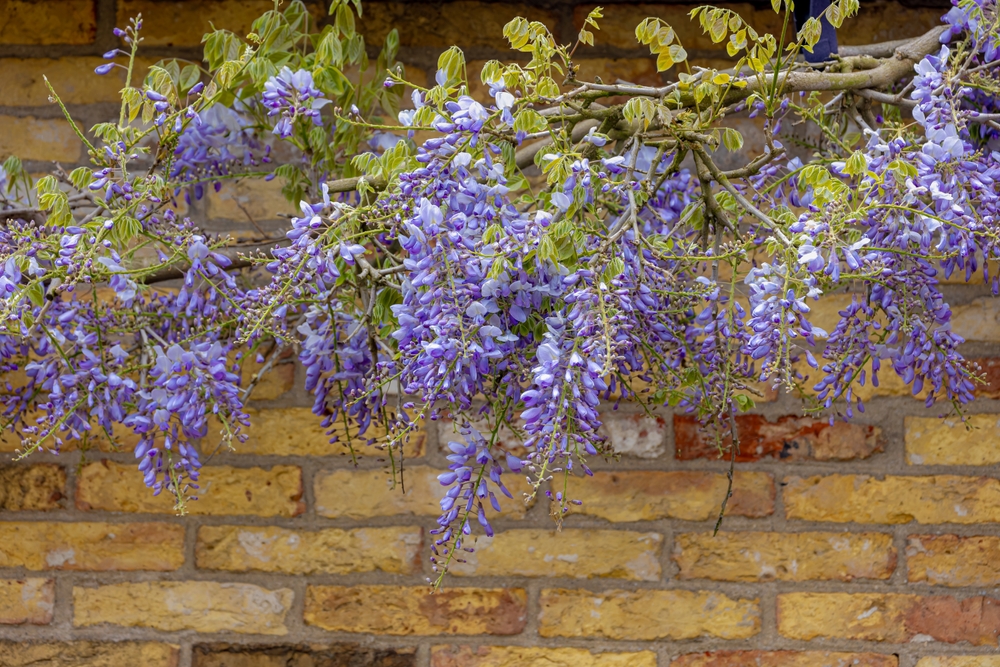
Wisteria is a vigorous climbing plant known for its beautiful, cascading clusters of purple, blue, or white flowers. It grows rapidly and can cover large areas of wall quickly, adding an elegant, romantic touch to your garden. Wisteria requires full sun to produce its stunning blooms and thrives in well-drained soil. Once established, it is relatively low-maintenance and very drought-tolerant.
However, Wisteria needs sturdy support due to its strong growth habit. Pruning is important to control its growth and encourage flowering. This plant may also require some attention during the winter months, as it can be vulnerable to frost damage. Wisteria’s spectacular blooms make it a favorite for adding dramatic flair to vertical spaces.
Trumpet Vine (Campsis radicans)
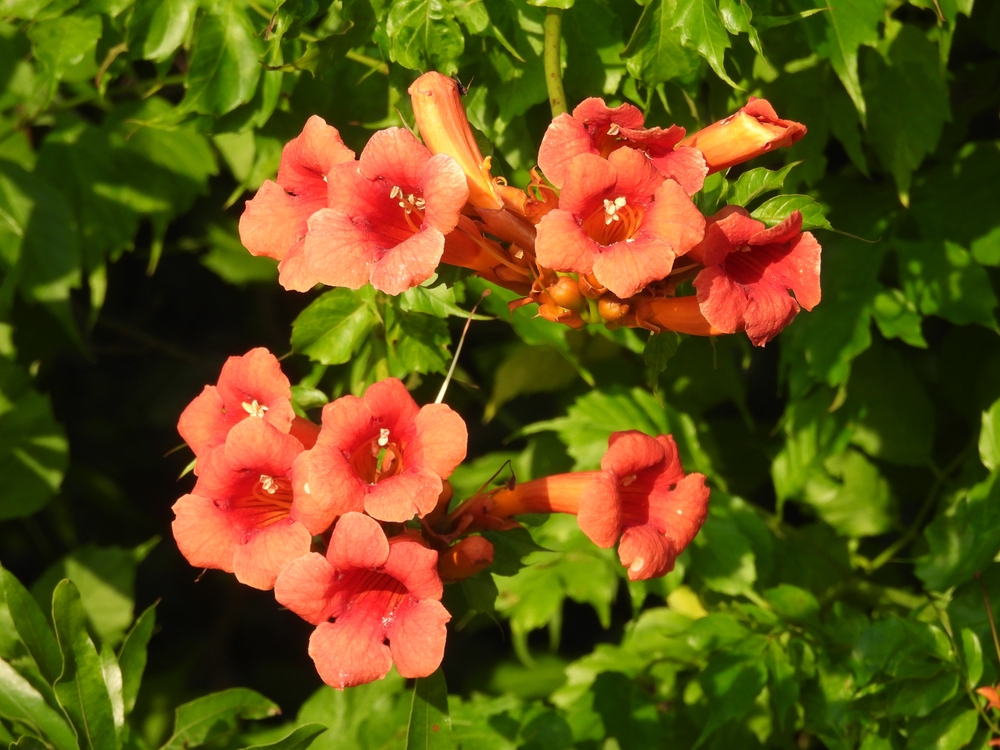
Trumpet vine is a fast-growing, climbing plant with vibrant, trumpet-shaped orange or red flowers. It is an excellent choice for adding color to your wall garden during the warmer months. This plant attracts hummingbirds, making it a great addition for gardeners interested in wildlife. Trumpet vine is highly adaptable and can thrive in full sun or partial shade.
While it is relatively low-maintenance, trumpet vine does need to be trimmed back regularly to keep it from becoming too invasive. Its growth can be controlled by pruning in early spring, which also encourages more blooms. The plant is very tolerant of drought conditions once established, but regular watering during dry spells will keep it healthy. Its bold flowers provide an eye-catching display during its blooming season.
Passionflower (Passiflora caerulea)
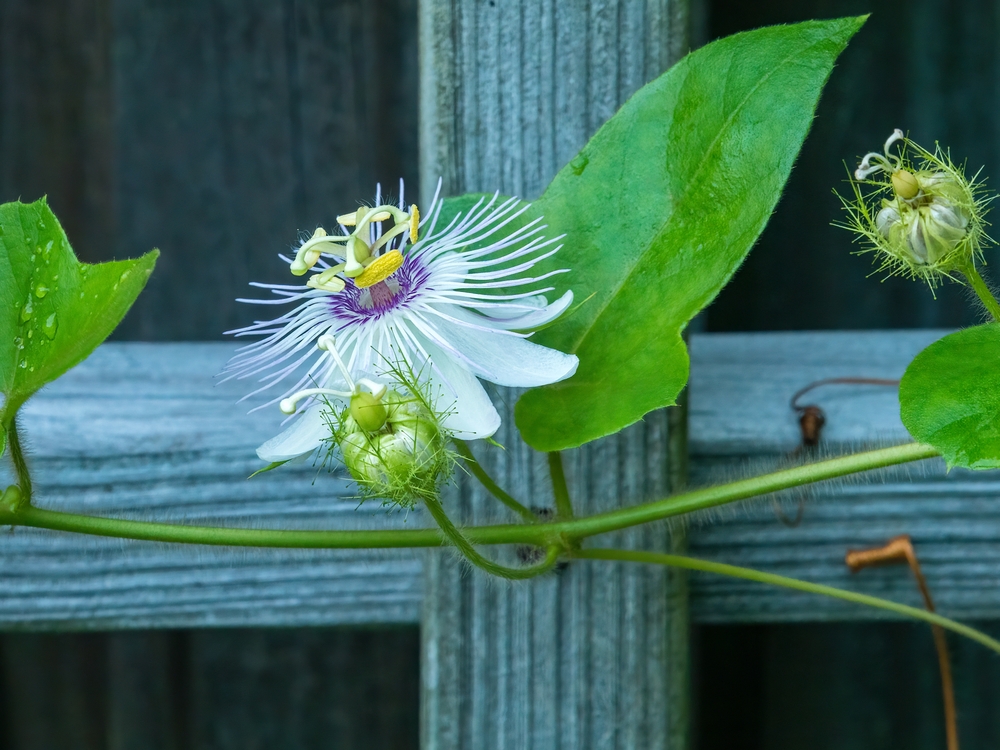
Passionflower is a stunning climbing plant known for its exotic-looking, vibrant blooms. The flowers have intricate, spiky petals and come in shades of purple, blue, and white. This plant is perfect for adding a tropical flair to your vertical garden, and it grows quickly when provided with proper support. It thrives in full sun to partial shade and prefers well-drained soil.
Passionflower is also known for attracting bees, butterflies, and hummingbirds, making it an excellent choice for pollinator-friendly gardens. It is relatively easy to care for, although it does require some regular pruning to manage its rapid growth. This plant needs regular watering but should not be overwatered, as it does not like wet feet. Once established, passionflower can thrive with minimal attention.
Climbing Hydrangea (Hydrangea anomala petiolaris)
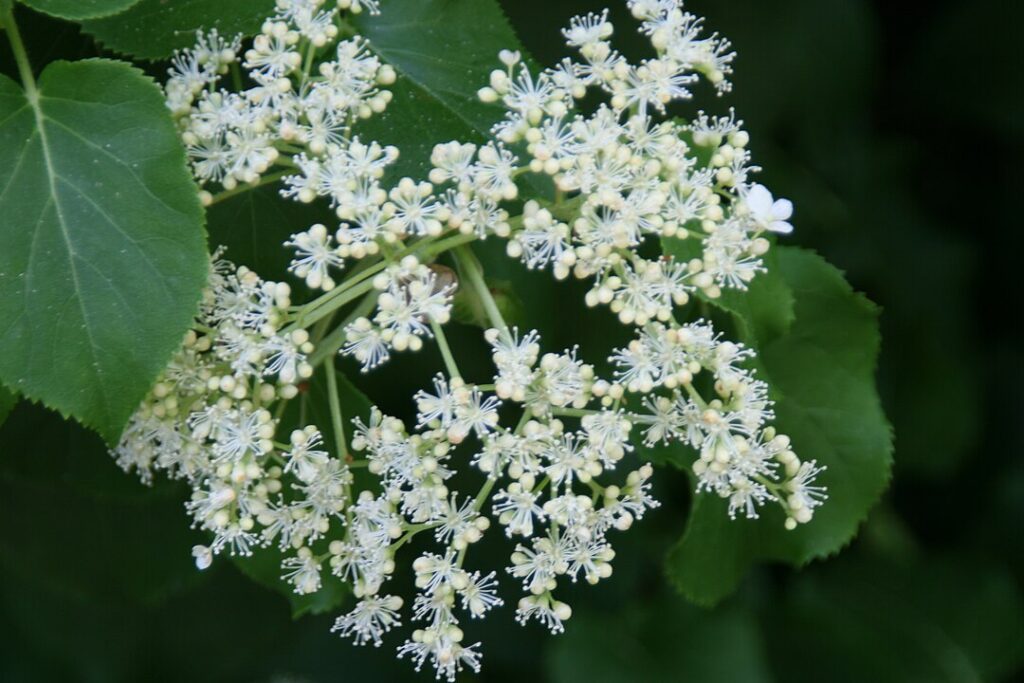
Climbing hydrangea is a beautiful, deciduous plant that produces large, white lacecap flowers in late spring to early summer. It is perfect for growing along shaded walls or fences, as it thrives in partial to full shade. This plant is a slow-grower but becomes a stunning feature once it establishes itself, with its dense green foliage and beautiful blooms.
The climbing hydrangea is known for its ability to cling to walls with its aerial roots, eliminating the need for a trellis or other support. After flowering, it continues to provide seasonal interest with its vibrant green leaves that turn yellow in the fall. It prefers moist, well-drained soil and regular watering, particularly during dry periods. Pruning is minimal, and dead flowers can be removed after blooming.
Bougainvillea (Bougainvillea spp.)
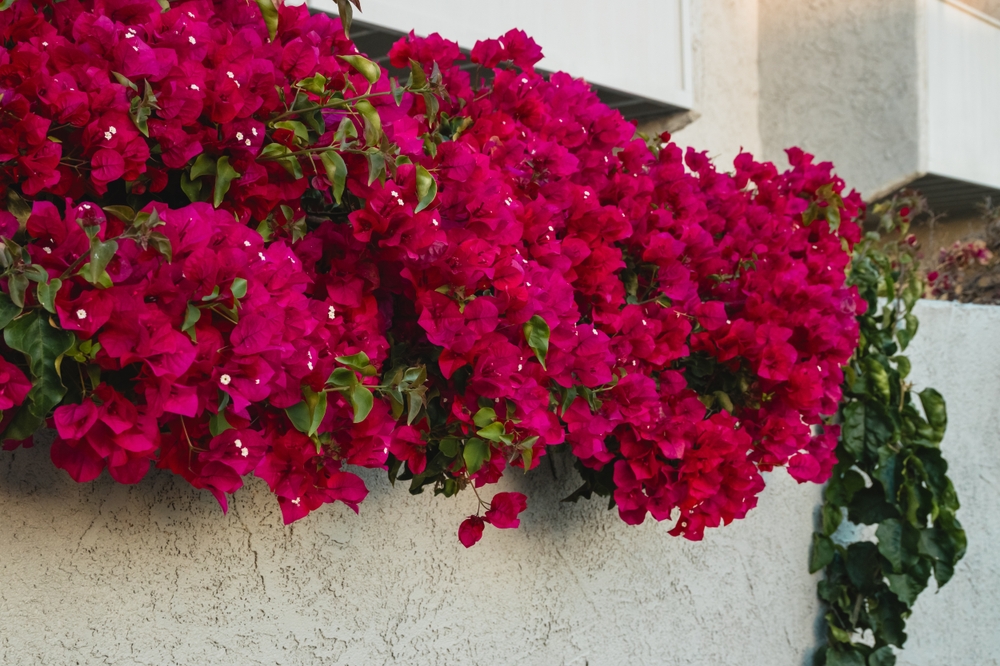
Bougainvillea is a vibrant and colorful plant that thrives in warm, sunny climates. Its paper-thin bracts, often in shades of pink, purple, or red, make it a favorite for adding color to vertical surfaces. Bougainvillea can quickly cover walls and fences with its sprawling vines and requires little maintenance once established. It flourishes in full sun and well-drained soil.
This plant is drought-tolerant and thrives in heat, making it an excellent option for sunny garden walls. Bougainvillea does need some pruning to maintain its shape and prevent it from becoming too unruly. It can be trained to climb or spread across walls, adding vibrant color to any space. Regular watering helps it bloom profusely, and a light fertilization program can encourage growth.
Clematis (Clematis spp.)
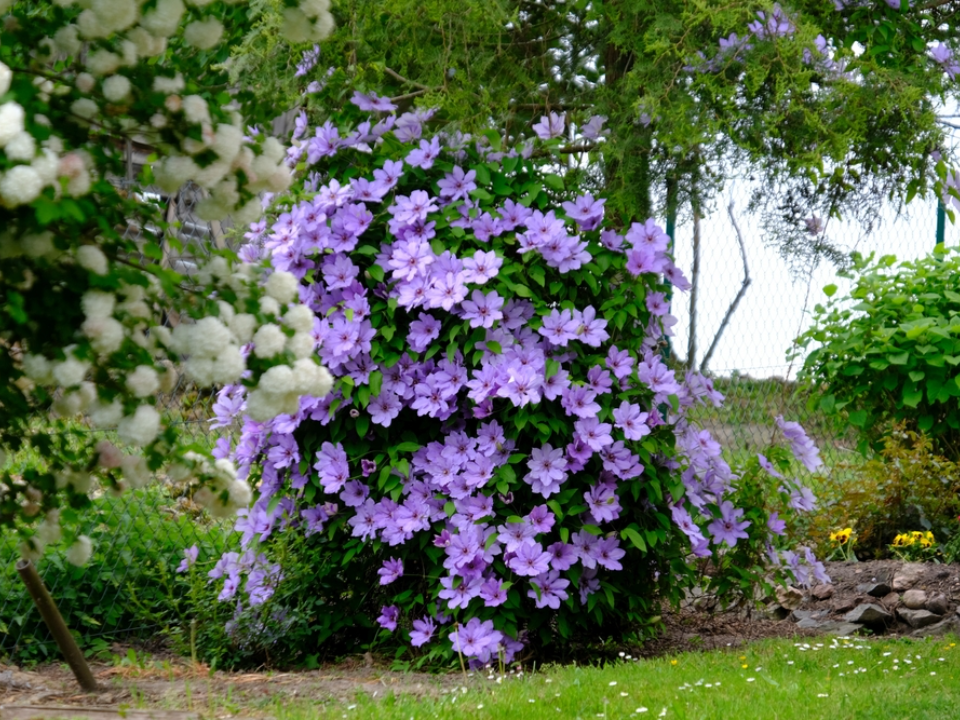
Clematis is a versatile climbing plant that produces beautiful flowers in a range of colors, from deep purple to bright pink. It is well-suited for growing on walls, trellises, or fences and can add height and interest to your garden. Clematis thrives in full sun but prefers its roots to be shaded, so it is often paired with ground-covering plants for a balanced look.
The plant needs well-drained, moist soil to grow well and should be watered regularly. Clematis benefits from pruning to remove dead or damaged growth and to encourage more blooms. This plant is an excellent choice for gardeners who want a climbing plant with seasonal beauty, as it produces stunning flowers in the spring and summer. Its vines create a lovely display of color that can brighten up any garden wall.
Hops (Humulus lupulus)
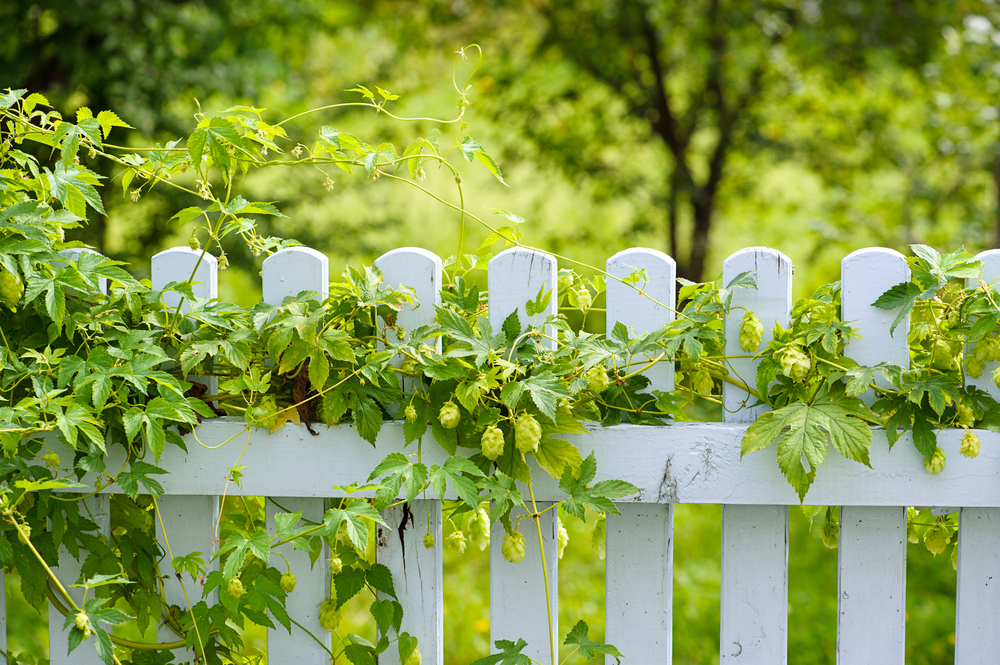
Hop is a fast-growing climbing plant that features unique golden-green leaves. It is often used to cover fences or walls, adding both foliage and texture. Hop thrives in full sun or partial shade and prefers moist, well-drained soil. Once established, it is very low-maintenance and can quickly fill vertical spaces with its dense growth.
Though it does not bloom like many climbing plants, the plant’s vibrant foliage provides year-round interest. Hop can be grown as a perennial, coming back each year stronger than before. It does require regular pruning to control its spread, but overall, it is a hardy and attractive choice for wall gardens. Its distinctive leaves create a lush backdrop that can complement other flowering vines.
Jasmine (Jasminum spp.)
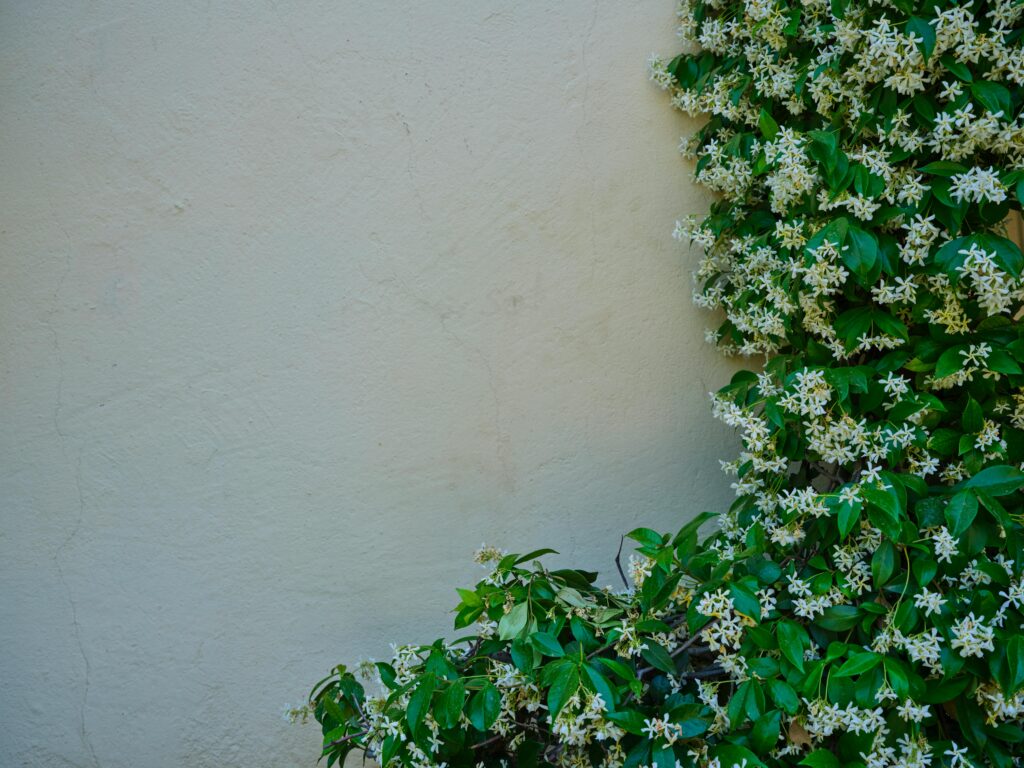
Jasmine is a fragrant, climbing plant that produces small, white or yellow flowers. It is known for its sweet scent and can turn any wall into a fragrant focal point. Jasmine grows best in full sun, though it can tolerate partial shade. It is a popular choice for adding a romantic touch to outdoor walls and can be trained to climb fences, walls, or trellises.
This plant needs well-drained, fertile soil and regular watering, especially during dry spells. Jasmine thrives in warmer climates and is relatively easy to maintain, though it benefits from occasional pruning to keep it under control. Its lovely fragrance makes it ideal for planting near patios or walkways. Jasmine is not only visually appealing but also offers a pleasant scent throughout the growing season.
Star Jasmine (Trachelospermum jasminoides)
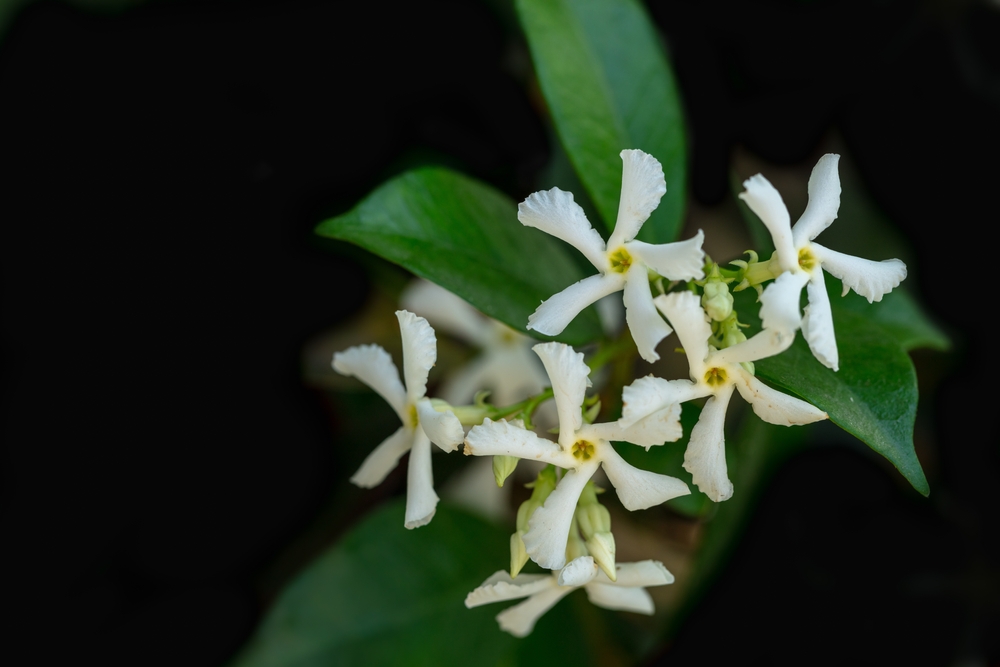
Star jasmine is a vigorous climber known for its fragrant, white, star-shaped flowers. It grows well on walls, trellises, or fences, where it can be trained to climb or spread. The plant thrives in full sun to partial shade and prefers moist, well-drained soil. Star jasmine’s glossy, dark green leaves provide year-round beauty, while its fragrant flowers bloom in late spring or early summer.
Once established, star jasmine requires very little care, although regular watering will help it thrive during dry spells. This plant is relatively slow-growing but will gradually cover a vertical surface with lush foliage and beautiful flowers. It is ideal for gardeners looking to add fragrance and beauty to a garden wall. Star jasmine is both ornamental and practical, offering both visual interest and a pleasant scent.
Morning Glory (Ipomoea tricolor)
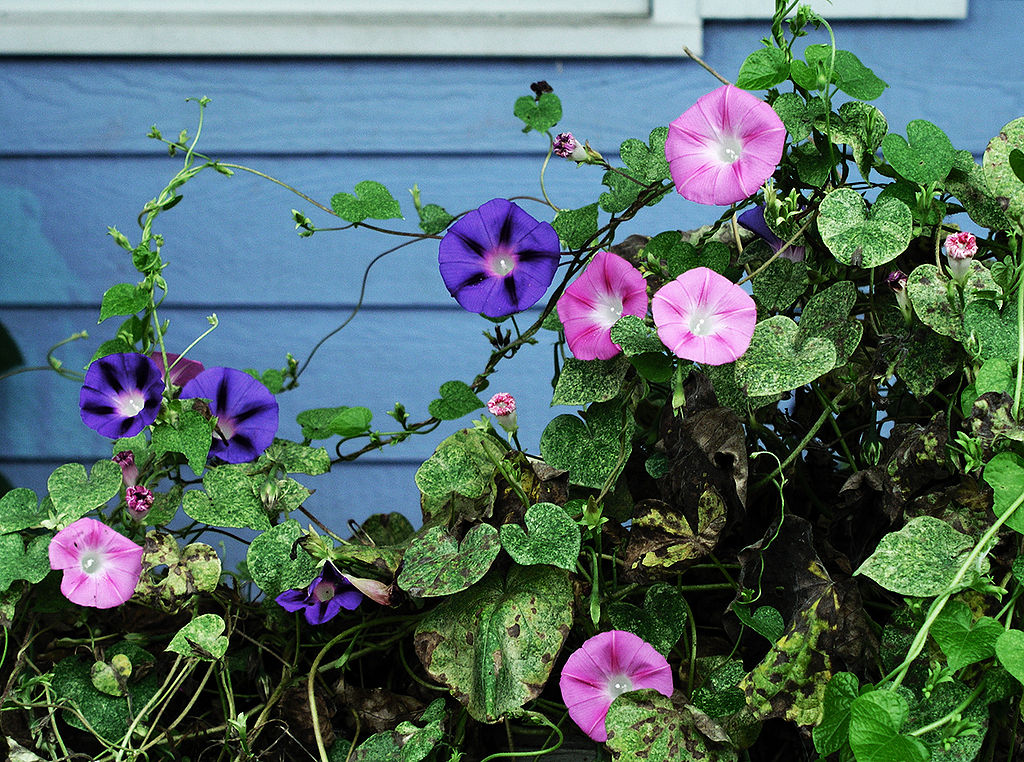
Morning glory is a fast-growing, climbing vine known for its vibrant, funnel-shaped flowers. It thrives in full sun, making it perfect for walls that receive plenty of light. The flowers come in shades of blue, purple, and pink, providing a burst of color to your vertical garden. Morning glory blooms in the morning and fades by the afternoon, adding daily charm to your space.
This plant requires minimal care once established but needs regular watering during dry periods. It can quickly climb and cover walls, fences, or trellises. Morning glory is easy to grow from seeds and can be trained to grow in a particular direction. Pruning helps control its growth and encourages more blooms, making it a popular choice for colorful wall gardens.
Sweet Potato Vine (Ipomoea batatas)
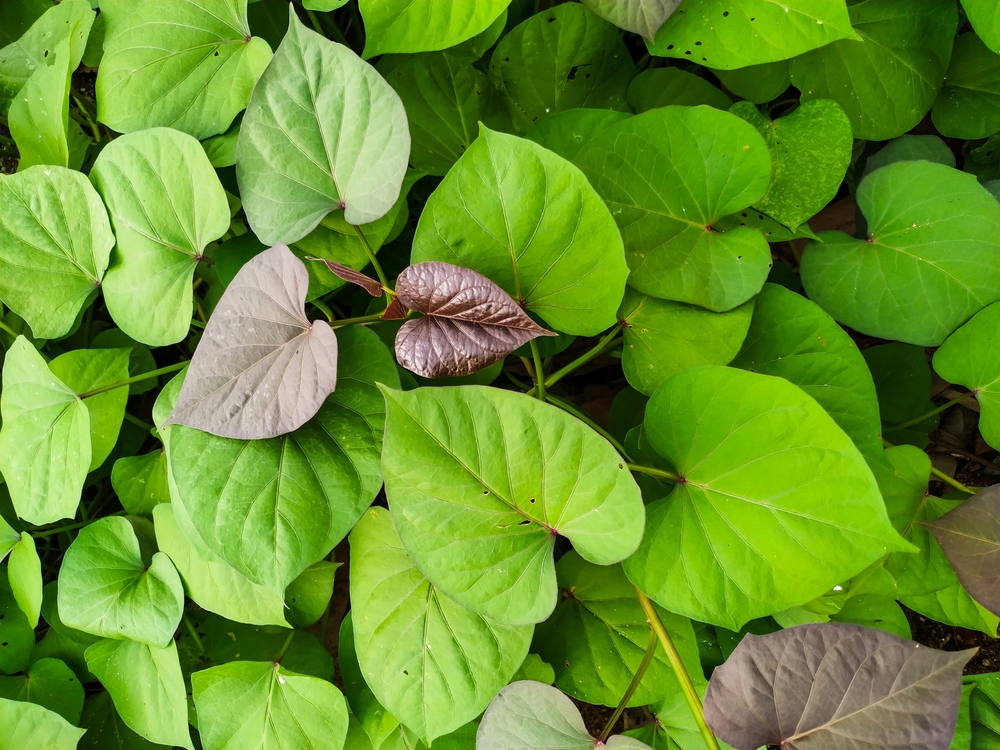
Sweet potato vine is a hardy, fast-growing plant with attractive foliage that can thrive on walls. Known for its heart-shaped leaves, the plant comes in a variety of colors, including green, purple, and bronze. It is particularly useful for adding texture and color to vertical spaces. Sweet potato vine can grow in full sun to partial shade, making it versatile for different locations.
It is a low-maintenance plant, requiring only regular watering and occasional trimming to prevent it from becoming too invasive. This vine is excellent for covering unsightly walls or creating a lush, cascading effect. Sweet potato vine can also be grown in containers if you’re looking for a more controlled display. Its fast-growing nature makes it a go-to choice for quick coverage.
Honeysuckle (Lonicera spp.)
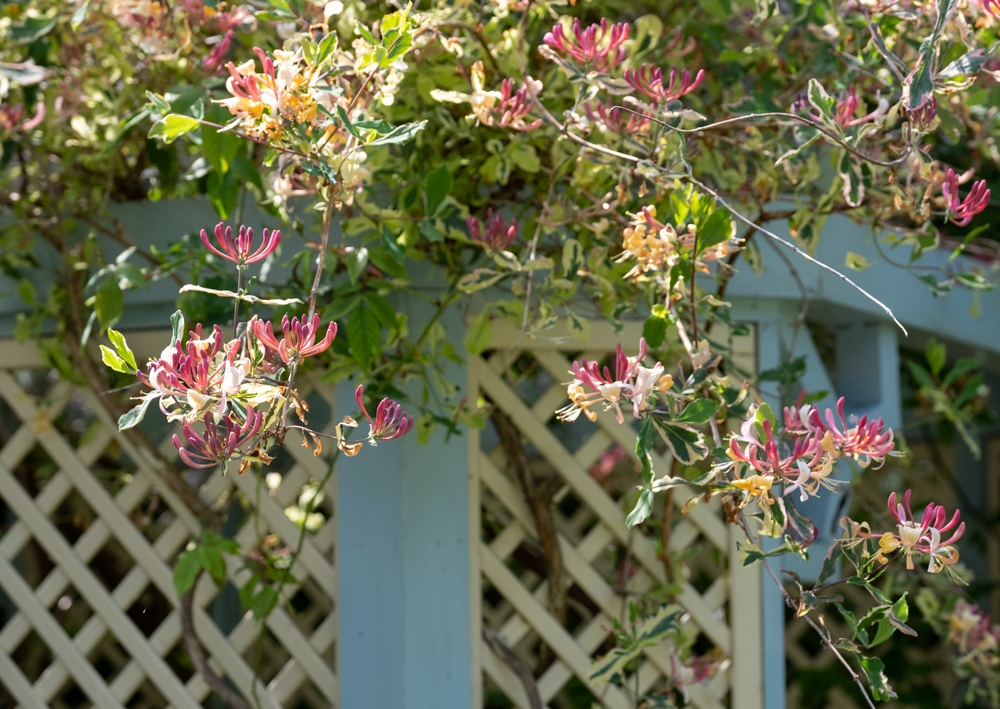
Honeysuckle is a fragrant, flowering vine that is perfect for climbing walls and fences. The plant produces tubular flowers in shades of yellow, orange, pink, or red, depending on the variety. Honeysuckle attracts pollinators like bees and hummingbirds, making it an excellent choice for a wildlife-friendly garden. It thrives in full sun to partial shade and prefers well-drained soil.
Once established, honeysuckle requires minimal care. Pruning is essential to keep the plant from becoming too wild and to encourage better blooms. This climbing plant can be trained along trellises, fences, or walls, providing a vibrant display of flowers. It also produces sweet nectar, adding to its appeal for both gardeners and pollinators.
This article originally appeared on Avocadu.
